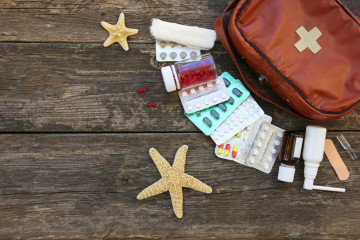Do not be paranoid, enjoy the outdoors as they revive you holistically. Avoid strenuous activity or extreme terrain, advises Dr Atul Mathur, Executive Director-Interventional Cardiology and Chief of Cath Lab, Fortis Escorts Heart Institute
Just because you have had a cardiac event — be it heart attack, heart failure, stroke, coronary artery disease (CAD), cardiac arrhythmia (irregular heart rate), a heart surgery or stenting — doesn’t mean you cannot go on a holiday. Of course, strenuous travel is ruled out for people who have just had a procedure, intervention or developed a condition. For this lot of people, you must sit out and stabilise before venturing out. Others just have to get their health status reviewed before they proceed on a vacation, plan their days, identify triggers and stressors and go prepared with a medical kit. All everybody needs to do is to follow the advisory and not over-exert themselves. And do not forget to carry your latest heart reports. Keep them handy so that no time is lost should there be an emergency.
PRE-TRAVEL ROUTINE
Consult your cardiologist and run a fresh series of tests like ECG, stress tests, TMT and echocardiography. If you experience any abnormal discomfort while doing these tests or while walking, such as breathlessness or chest pain, report them to your doctor. Do not travel till he/she clears you.
IN THE HILLS
Most cardiac patients are under the impression that while the beach is a safe option, they cannot travel to the hills. We are often asked a particular question, “Can I go up to 10,000 feet, say Leh, with stents and bypass?” Even normal persons can have severe breathlessness on reaching high altitude if they start exerting before getting acclimatised. The same rule applies to all cardiac patients with normal heart function. Those with impaired heart function, however, need proper evaluation by their physician before planning a trip to Leh. If they do not qualify, the Himalayas at lower altitudes are no less beautiful.
If you are in a high altitude terrain, you should take Diamox over and above the prescribed medication. Also, keep yourself informed about the nearest medical facility. Seaside is always considered a better option as the fresh breeze airs out your lungs and oxygenates you well enough.
TELEMEDICINE OPTIONS
Teleconsult is legally allowed in our country and can be arranged with your own physician or other sources. Several wearable devices like Apple Watch can monitor the heart rate but the most important factor is to monitor your SpO2 levels.
INTERNATIONAL TRAVEL
Most cardiac patients can travel safely. Only those with weak hearts and ongoing active conditions should seek prior screening by a physician. If you are on a long haul flight, take plenty of fluids and frequent walks down the aisle. This eliminates the possibility of developing venous clots. It is for the same reason that you need to flex and move your ankle joints. Make sure you are carrying your travel insurance.
TAKE YOUR MEDICINE ON TIME
No matter what time zone you are in, please take your medication as prescribed at the right time and maintain the gap between doses. You can always reset your watch to India time to follow this regime.
Take a blood pressure monitor with you. Don’t forget to carry your medicines, including emergency ones, and keep some extra strips just in case you’ve had to overstay for some reason. Do not skip medicines while travelling.
Do not be paranoid, enjoy the outdoors as they revive you holistically. However, do not ignore chest pain, breathlessness or exhaustion and seek the opinion of your doctor immediately.



1 Comment
where to get accutane online